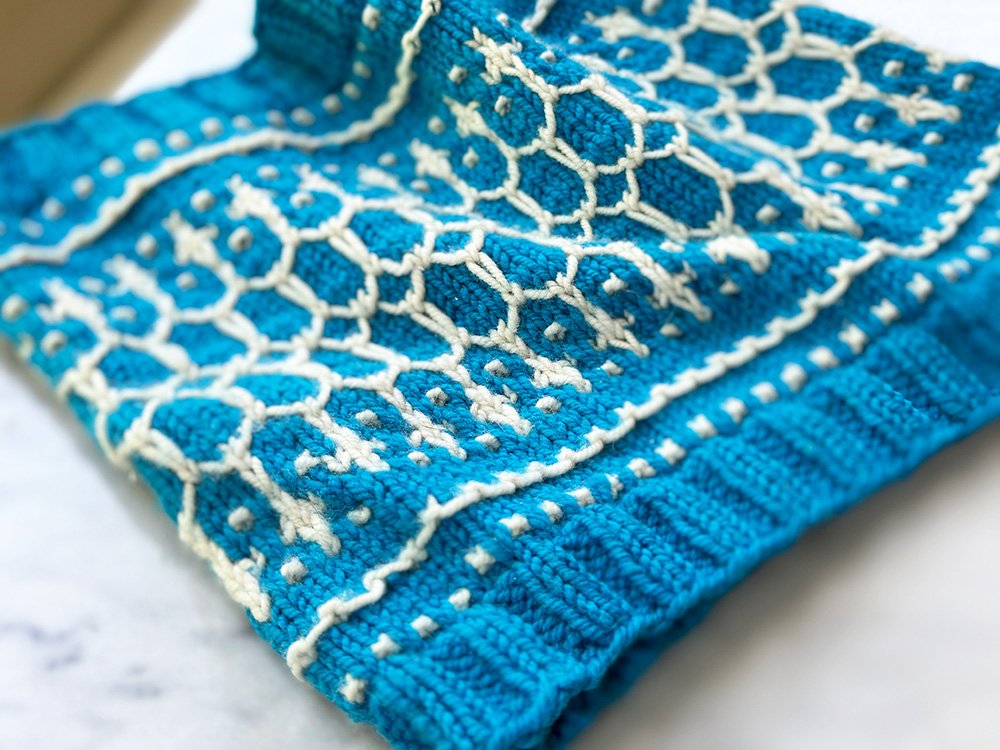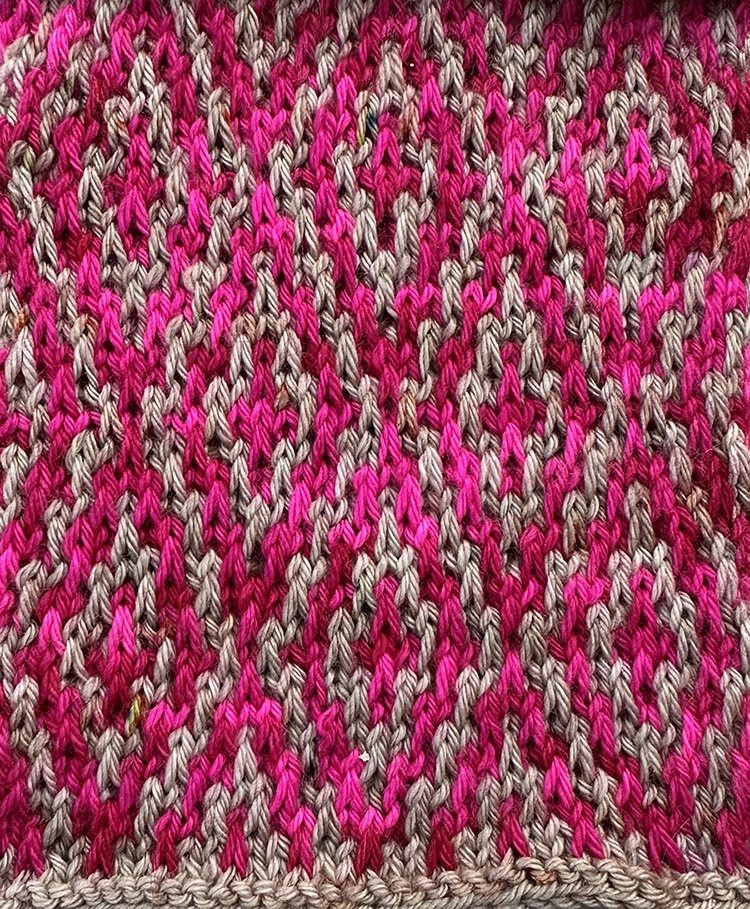The Art of Mosaic Knitting: A Guide for Beginners
Are you ready to take a colorful knitting journey? If you're looking to add a touch of artistry and depth to your projects, then mosaic knitting might be just what you need.
This technique combines the simplicity of basic knitting stitches with the creativity of colorwork, resulting in visually stunning patterns that are sure to impress. Whether you're a beginner eager to learn something new or an experienced knitter looking to expand your repertoire, this guide will unlock the secrets of mosaic knitting and help you create beautiful, intricate designs. From understanding the essentials of color selection to mastering the techniques of slipped stitches, you'll discover how to bring your knitting to life with vibrant patterns and textures. Get ready to release your inner artist and take your knitting projects to new heights with the beauty of mosaic knitting.
Understanding the basics of mosaic knitting
Mosaic knitting is a technique that involves creating intricate patterns using two contrasting colors of yarn. Unlike traditional colorwork techniques such as Fair Isle or intarsia, mosaic knitting uses slipped stitches to create the illusion of complex colorwork without actually having to work with multiple strands of yarn at once. This makes it a perfect choice for beginners who want to experiment with color without feeling overwhelmed.
To get started with mosaic knitting, you'll need to have a basic understanding of stitches such as knit and purl stitched. The technique involves working with a main color (MC) and a contrasting color (CC). The MC forms the background of the pattern, while the CC is used to create the contrasting design elements. By slipping certain stitches and knitting or purling the rest, you can create beautiful geometric patterns that look much more complex than they actually are.
This beautiful diamond pattern looks like intricate colorwork, but is simply created with slipped stitches
Choosing the right yarn for mosaic knitting
When it comes to choosing yarn for mosaic knitting, there are a few factors to consider. First, you'll want to select colors that have a strong contrast with each other. This will ensure that your mosaic patterns stand out and create a visually striking effect. For example, pairing a light color with a dark color or a warm color with a cool color can create a beautiful contrast.
In addition to color contrast, it's also important to consider the fiber content and weight of the yarn. For mosaic knitting, it's generally best to choose a yarn with good stitch definition, as this will make your patterns more distinct. Yarns with a smooth texture are often a good choice.
Essential techniques for mosaic knitting
Now that you have your yarn ready, it's time to learn some essential techniques for mosaic knitting. The first technique you'll need to master is the slip stitch. When working in mosaic knitting, you'll be slipping certain stitches from the previous row without actually knitting or purling them. This creates the contrasting color effect and is what gives mosaic knitting its unique look.
To slip a stitch, simply insert your right needle into the stitch as if you were going to purl it, but instead of purling it, just slide it onto the right needle without working it. You'll then continue knitting or purling the next stitch as the pattern instructs. Slipping stitches in this way creates a stranded effect, where you have one color floating behind the other.
In mosaic knitting, you are typically working 2-row or 4-row stripes of each color with a pattern created by pulling contrasting color slipped stitches up from the rows below. This creates the illusion of colorwork without having to carry multiple strands of yarn. By following a mosaic knitting chart or pattern, you'll know exactly when and where to slip stitches to create the desired design.
Tips for reading mosaic knitting patterns
Reading mosaic knitting patterns can be a bit intimidating at first, but with a little practice, it will become second nature. Most mosaic knitting patterns are presented in the form of charts, which use symbols or colors to represent different stitches. Each square on the chart corresponds to one stitch, and the symbols or colors indicate whether to knit, purl, or slip the stitch. Often, the first square of right-side rows (along the right edge of the chart) represents the color to be used for that row of knitting. Any square in that row that is a different color would be slipped.
If you're new to reading charts, it can be helpful to start with a simple pattern and practice following along with the chart. As you become more familiar with the symbols and stitches, you'll find that reading mosaic knitting patterns becomes much easier and more intuitive.
Common mistakes to avoid in mosaic knitting
While mosaic knitting is a relatively straightforward technique, there are a few common mistakes that beginners often make. One of the most common mistakes is forgetting to slip stitches when they should be slipped. This can result in a distorted pattern and make it difficult to achieve the desired design.
Another common mistake is not maintaining an even tension throughout your work. When working mosaic patterns, it's important to ensure that the yarn being carried along the back of the work (behind the slipped stitches) is done so with an even tension. If it is pulled to tight, it can create an uneven fabric and distort the pattern. The more consecutive slipped stitches you have, the more you need to pay attention to you tension.
It's also important to pay attention to the stitch counts and pattern repeats. Missing or adding stitches can throw off the entire pattern and make it difficult to correct later on. Always double-check your stitch counts after each row to ensure that you're on track.
Exploring different mosaic knitting stitch patterns
Now that you have a solid understanding of the basics of mosaic knitting, it's time to explore different stitch patterns. Mosaic knitting offers endless possibilities for creating unique and eye-catching designs. From simple geometric patterns to intricate motifs, there's a mosaic stitch pattern out there for every skill level and aesthetic preference.
One popular mosaic knitting stitch pattern is the "brick stitch." This pattern creates a textured, brick-like effect and is perfect for adding depth and dimension to your projects . Another popular pattern is the "check stitch," which mimics the look of a checked fabric and adds a beautiful, touch to your knitting.
Brick Stitch Pattern
Check Stitch Pattern
If you're feeling adventurous, you can also experiment with combining different mosaic stitch patterns to create your own unique designs. By playing with color and pattern placement, you can create stunning works of art that are truly one-of-a-kind.
Project ideas for beginners in mosaic knitting
Now that you have a few mosaic knitting stitch patterns under your belt, it's time to put your skills to the test with some beginner-friendly projects. Here are a few ideas to get you started:
1. Dishcloth: If you're looking for a quick and easy project, a mosaic knit dishcloth is a perfect choice. Choose a small, simple stitch pattern and create a set of colorful dishcloths to brighten up your kitchen. The Ballband Dishcloth is a classic entry level mosaic project. Like many knitters, this was my first mosaic project, knit in Peaches and Cream yarn.
2. Blanket: When you are ready to level up your mosaic knitting, try a slightly more involved stitch pattern. The Mosaic Blanket by Purl Soho is a great next project.
3. Cowl: One you are comfortable following mosaic patterning, you can try working mosaic in the round. My pattern By The Sea Cowl (see image right) has a simple shape with a variety of slip stitch patterns to keep it interesting.
By The Sea Cowl
Remember, the possibilities are endless when it comes to mosaic knitting. Don't be afraid to get creative and experiment with different stitch patterns and color combinations.
Resources and further learning for mosaic knitting
If you're eager to dive deeper into the world of mosaic knitting, there are plenty of resources available to help you expand your skills and knowledge. Here are a few recommendations:
1. Books: There are several books dedicated to mosaic knitting that offer in-depth tutorials, stitch patterns, and project ideas. "Mosaic Knitting" by Barbara G. Walker is a highly recommended classic book for beginners. When you are ready for a challenge, try “Mosaic & Lace Knits” by Barbra Benson for some very inspiring and unique projects, this book is a favorite of mine.
2. Online tutorials: There are many online tutorials and video courses that can guide you through the process of mosaic knitting. YouTube is a great resource for finding step-by-step tutorials and demonstrations.
3. Practice, practice, practice: The best way to improve your mosaic knitting skills is to practice regularly. Start with small projects and gradually work your way up to more complex designs. With time and practice, you'll become more comfortable with the technique and be able to tackle more advanced projects.
Conclusion
Mosaic knitting is a fun technique that allows knitters to create beautiful, intricate designs with ease. By combining basic knitting stitches with the creativity of colorwork, you can unlock a whole new world of possibilities for your knitting projects. Whether you're a beginner or an experienced knitter, mosaic knitting offers endless opportunities for artistic expression. So, grab your needles, choose some vibrant yarn, and let your creativity soar with mosaic knitting. Happy knitting!





